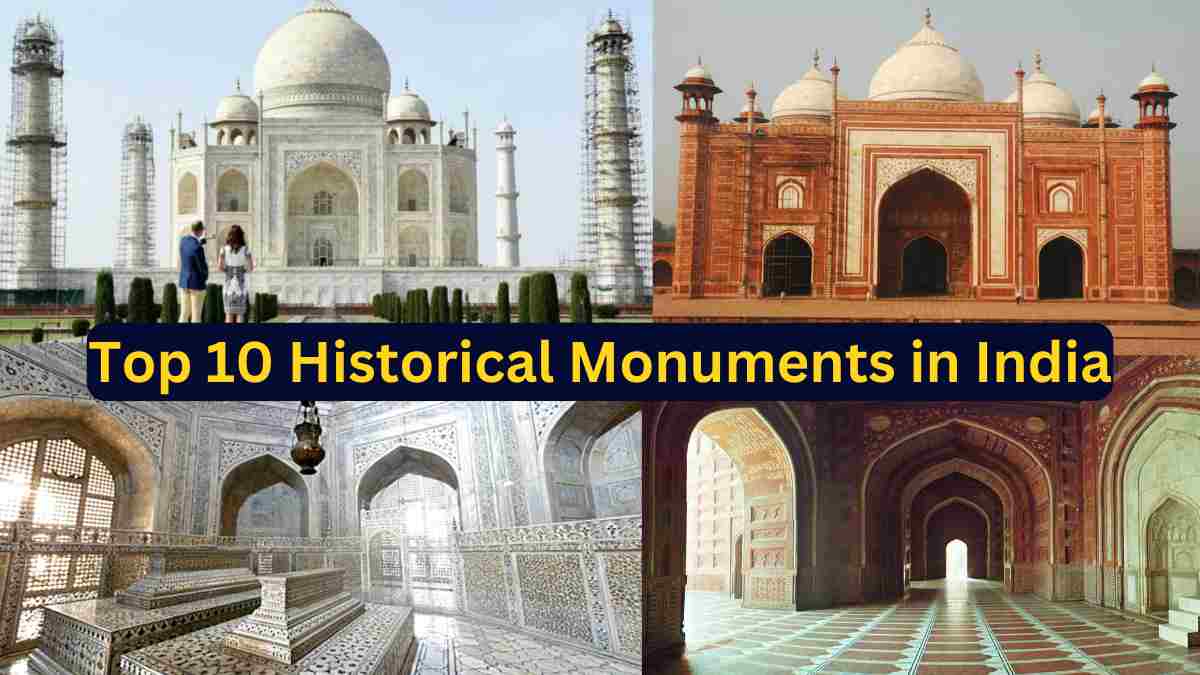India’s monuments demonstrate a deep connection to the country’s cultural and historical roots. From the love story of the Taj Mahal to the splendid architecture of Qutub Minar, these landmarks reflect diverse artistic achievements over the centuries, each offering a unique glimpse into the past and the nation’s cultural development process.
India is a country with a very rich tapestry of history and culture. Read more to know about the most historic sites recognized by UNESCO as World Heritage Sites, showcasing the country’s brilliant architecture and historical significance. Here are the ten most famous historical sites in India:
1. Taj Mahal, Agra
Year of construction: 1648
The symbol of love, the Taj Mahal, was the brainchild of Mughal Emperor Shah Jahan for his beloved wife, Mumtaz Mahal. This marvelous white marble mausoleum is world famous for its superb craftsmanship and is one of the Seven Wonders of the World.
Related stories
2. Qutub Tower, Delhi

Year: 1193
Qutub Minar is the tallest brick tower in the world, 73 meters high. This monument showcases Indo-Islamic architecture, complete with intricate carvings and inscriptions.
3. Ajanta Caves, Maharashtra

Year of construction: From the 2nd century BC to the 6th century CE
These rock-cut caves contain some of the most magnificent frescoes and sculptures of their time, reflecting Buddhist themes. They have been listed as a UNESCO World Heritage Site and signify the artistic culture and architecture of ancient India.
Also read | Top 10 richest countries in the world
4. Ellora Caves, Maharashtra

Year of construction: 6th to 10th century CE
Ellora Caves has Hindu, Buddhist and Jain stone temples and monasteries. Among these, the Kailasa temple dedicated to Lord Shiva is notable for its monumental architecture.
5. Sun Temple, Konark

Year of construction: 1250 CE
This temple is dedicated to the Sun God and is designed to resemble a giant chariot, complete with elaborately carved wheels. This is an architectural masterpiece that represents the artistic excellence of ancient India.
6. Khajuraho Temple, Madhya Pradesh

Year of construction: 950 to 1050 CE
Beautiful sculptures and erotic carvings have made these temples the epitome of the artistic feats of the Chandela dynasty. This is a UNESCO World Heritage Site.
7. Hampi Ruins, Karnataka

Year of construction: 14th to 16th century CE
Hampi was once the capital of the Vijayanagara Empire. Hampi is a place of rich heritage with temples, palaces and monuments that speak of Dravidian architecture. Also read | Top 10 poorest countries in the world
8. Great Living Chola Temple, Tamil Nadu

Year of construction: 11th to 12th century CE
These temples epitomize the grandeur of Chola architecture with intricate sculptures and towering gopurams (gate towers). Notable temples include Brihadeeswarar Temple in Thanjavur.
9. Humayun’s Tomb, Delhi

Year of construction: 1570
This tomb was the first in a series of Mughal monuments that eventually led to the development of the Taj Mahal. Several beautiful gardens and Persian-style designs mark its grounds.
10. Fatehpur Sikri, Uttar Pradesh
:max_bytes(150000):strip_icc()/GettyImages-692142248-4175bae74835410d8ad630be9cd22e23.jpg)
Year of construction: Late 16th century
The capital from which Akbar was later transferred to Agra Fatehpur Sikri, is made of red sandstone, showing a wonderful fusion of architectural styles, both Muslim and Hindu.
These monuments not only represent important tourist attractions but also represent India’s diverse cultural heritage and historical narrative. Each location tells a story of its time and continues to inspire awe in visitors from around the world. Also read | Top 10 most peaceful countries in the world in 2024: Iceland leads the global peace index again. Also read | Top 5 Richest Ministers of India Also read | Top 10 highest paid actors in India










